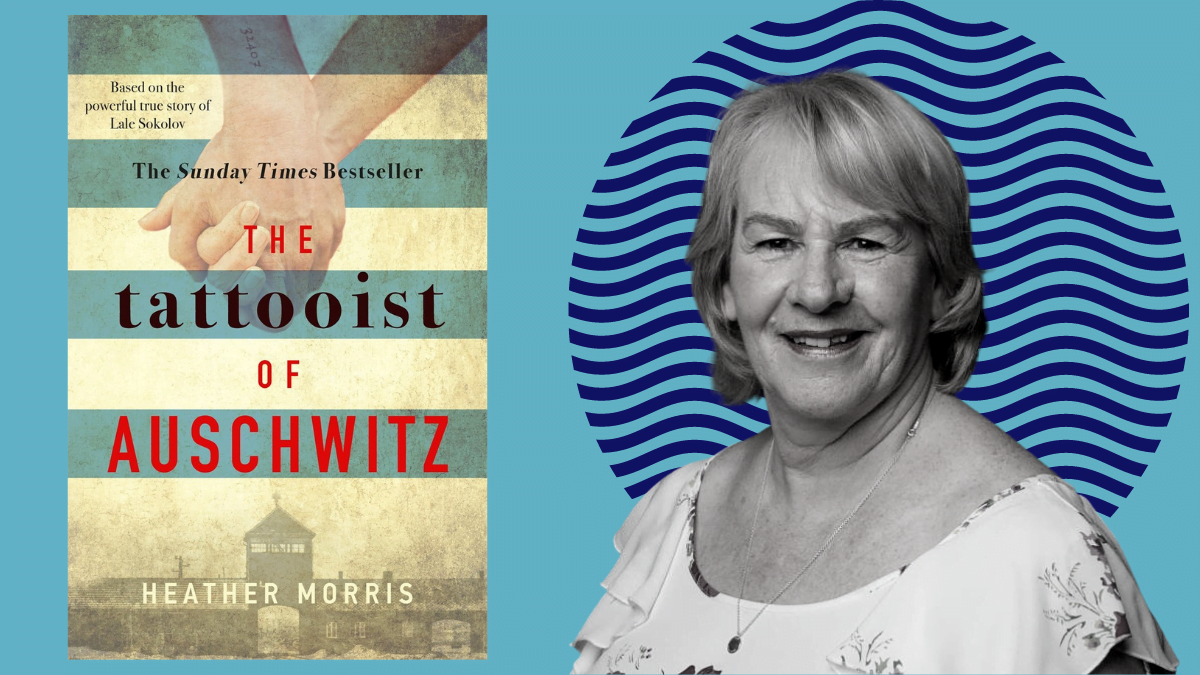“Happiness can be found even in the darkest times only if one remembers to turn on the light.’’
– J.K. Rowling (a quote from the Prisoner of Azkaban, Harry Potter series)
The above-mentioned quote resonates with the very theme of the book, The Tattooist of Auschwitz by Heather Morris.
The story of the Tattooist of Auschwitz is a story of love, hope, and most importantly, survival in the times of crisis. The story begins in 1942, with the main protagonist of the story, Lale Sokolov being forcibly transported to the concentration camp at Auschwitz-Birkenau. His ability to speak several languages and his confidence instantly set him apart from other prisoners at the camp. Soon enough, he gets one of the most prized jobs at the camp – he was asked to assist the Head Tattooist of the Auschwitz camp (who was also a fellow Jew like him).
Lale Sokolov, himself is tattooed a number on his arm, 32407 which becomes his identity in the camp. Despite this number, he was determined to make the best out of the current situation. He begins his journey as a tattooist. After a few days, he becomes the Head tattooist at the camp. One day in July 1942, Lale comforts a trembling young woman waiting to be tattooed by him.
Imprisoned for more than two and a half years, Lale had witnessed horrific atrocities and barbarism – but also incredible acts of compassion and bravery. Death had come knocking on his door more than once, yet he never gave up hope.
“I tattooed a number on her arm. She tattooed her name on my heart.”
Lale tattooed the number 34902 on her arm. The girl’s name is Gita and in that first encounter of theirs, he vows that he will somehow survive the camp along with Gita and be free. Lale does not only want freedom for himself and Gita; he wants a future together with her, he wants to marry her. How he defeated death or whether he was able to have a beautiful future with Gita as a happily married couple is what the book is about. The book also chronicles the day-to-day experiences of Gita and Lale in the Nazi camp.
Also read: Book Review: Feminism Redefined In Margo’s Memoir Called Negroland
Imprisoned for more than two and a half years, Lale had witnessed horrific atrocities and barbarism – but also incredible acts of compassion and bravery. Death had come knocking on his door more than once, yet he never gave up hope. This quality of his, set him apart from other fellow inmates in the camp. He endured a lot but tried his best to always help others, often by risking his life to do it. He was aware of his privileged position at the camp as the head tattooist of Auschwitz and he always used it to help others—be it smuggling in extra food for others, and doing everything he could to save as many people as possible from the infamous Gas Chambers.
Women usually are pitted against each other. The book however, gives us glimpses of female bonding. Gita’s female friends are a constant support to her—they even aid Lale in saving Gita’s life when she suffers from pneumonia. Perhaps the best example of female bonding is reflected in the friendship between Cilka and Gita. Cilka, Gita’s friend, ensures that her Lale is not put inside Gas Chambers, even when she knew she had to pay the price for this favour through her body. We also get a glimpse of the sexual abuse that female concentration camp victims faced at the hands of the officers (records of which are rarely found).
The Tattooist of Auschwitz is a testament to the endurance of love and humanity under the darkest conditions possible. Together, Lale and Gita teach us never to give up hope.
The Tattooist of Auschwitz is a testament to the endurance of love and humanity under the darkest conditions possible. Together, Lale and Gita teach us never to give up hope. The author gives us a vivid description of the day-to-day workings of the most notorious German death camps. This book also reminds us of an important lesson we learned as children but we often tend to forget the lesson when we grow up – “make the best out of what you have.” This is not to trivialise the violence that Nazi Germany inflicted on the Jews, but a sliver of hope to resist against such autocratic forces.
Napoleon had once told, “The world suffers not because of violence of the bad people but because of the silence of the good people.”
Lale, despite himself always facing the threat of being thrown into the Gas Chambers, chose to help others in whatever way he could, even if it meant risking his own life. Lale did not choose the easy way out—he chose to fight back and that’s what sets him apart from everyone else. He inspires his readers to be brave, compassionate and above all never to give up hope.
So this year’s end, if the bookworm has suddenly woken up, you must not forget to give The Tattooist of Auschwitz a read! If you like the book, you are in store for more as there is a sequel to this book: The Journey of Cilka, a story of a woman’s strength and patience. But for that you need to read The Tattooist of Auschwitz first!
Also read: Book Review: Hindutva And Dalits: Perspectives For Understanding Communal Praxis
Disclaimer: Though there are some debates regarding the authenticity of Lale Sokolov’s story and certain facts mentioned in the book, of which the author is aware, one must read this even as a work of fiction.




